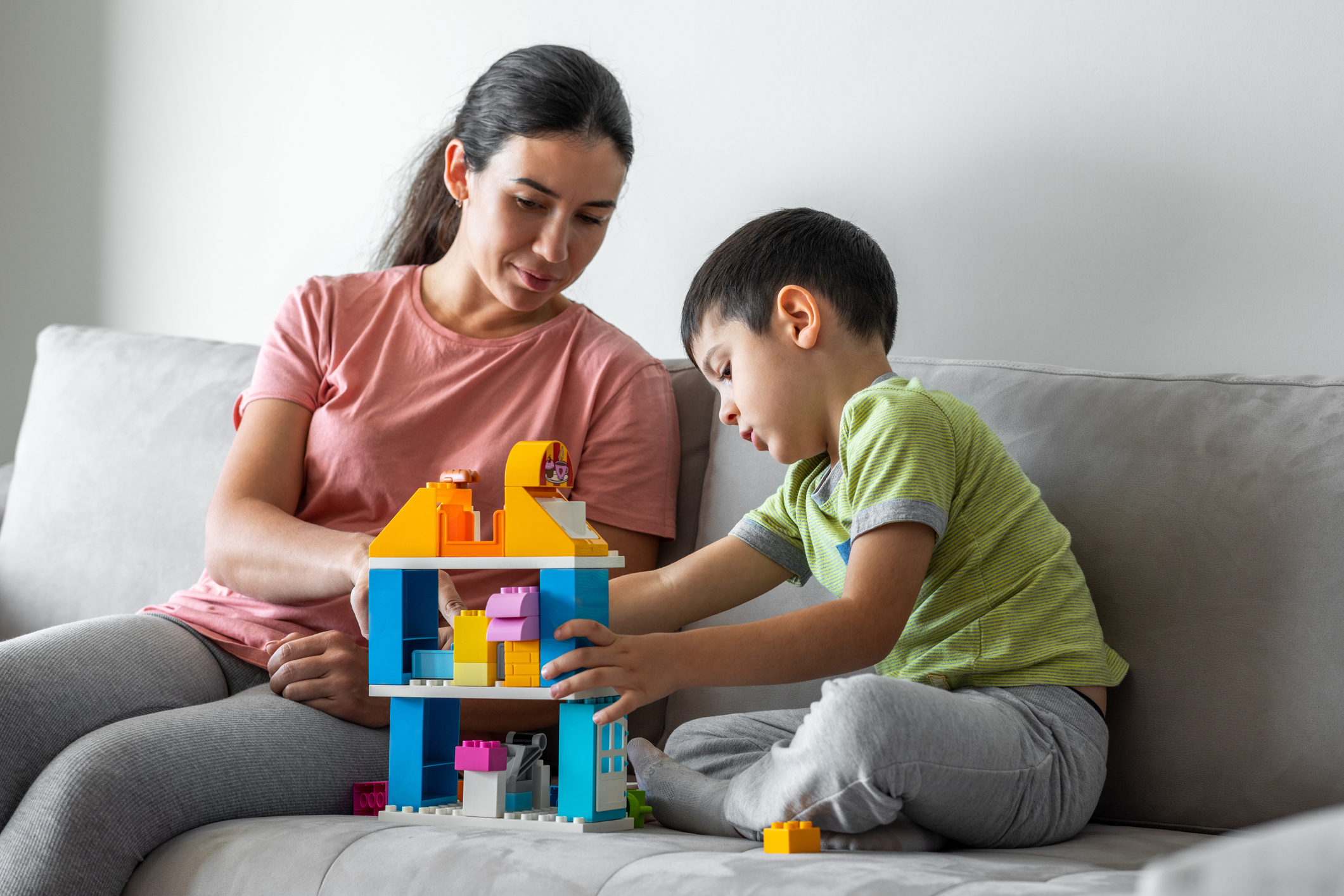In the realm of residential care, healing and recovery are not solely achieved through traditional therapeutic modalities. While these approaches are undoubtedly valuable, there is a growing recognition that healing is deeply rooted in human connection. This is where attachment-focused strategies come into play.
Attachment, at its core, is the fundamental human need to form strong emotional bonds with others. It shapes our ability to trust, self-regulate, and navigate the complexities of relationships. In the context of residential care, understanding and utilizing attachment-focused strategies can be transformative for both residents and care providers.
This blog post will delve into the significance of connection in healing, particularly in the context of residential care. We will explore the role of connection in mental health and emotional healing, highlighting its importance in fostering a nurturing and supportive environment. Moreover, we will delve into the practical strategies that can be implemented to promote healing through attachment-focused therapy.
The benefits of using attachment-focused strategies in residential care are numerous. They not only help individuals develop secure attachments but also facilitate emotional expression, trust-building, and consistent care. By implementing these strategies, residential care providers can create a safe and nurturing environment that supports the healing journey of their residents.
However, implementing attachment-focused strategies in residential care is not without its challenges. Addressing resistance and setbacks in therapy, handling attachment disorders and trauma, and navigating personality clashes and conflict are all important aspects that need to be considered. This blog post will also provide insights and guidance on overcoming these challenges.
Ultimately, this blog post aims to shed light on the transformative power of connection in healing and recovery within the context of residential care. By embracing attachment-focused strategies, care providers can create an environment that fosters growth, resilience, and genuine connection, leading to long-lasting healing for their residents.
Understanding Attachment: The Foundation for Healing
Attachment is a fundamental aspect of human development and plays a crucial role in our ability to form and maintain healthy relationships. To effectively utilize attachment-focused strategies in residential care, it is essential to have a comprehensive understanding of attachment theory and its implications for healing.
What is Attachment Theory?
Attachment theory, proposed by psychologist John Bowlby, suggests that humans have an innate need to form emotional bonds with others, particularly with primary caregivers. These early attachments shape our expectations, beliefs, and behaviours in relationships throughout our lives.
The Four Attachment Styles
Attachment theory classifies individuals into four attachment styles: secure, anxious-preoccupied, dismissive-avoidant, and fearful-avoidant. Each style reflects different patterns of relating to others and influences how individuals seek connection and respond to stress.
- Secure Attachment: Individuals with secure attachment feel comfortable with intimacy and seek support from others. They trust their caregivers and have confidence in their availability and responsiveness.
- Anxious-Preoccupied Attachment: Individuals with anxious-preoccupied attachment often seek excessive reassurance and worry about abandonment. They may exhibit clingy behaviour and have difficulty trusting others.
- Dismissive-Avoidant Attachment: Individuals with dismissive-avoidant attachment tend to avoid emotional closeness and may suppress their emotional needs. They may appear emotionally distant or dismissive of the importance of relationships.
- Fearful-Avoidant Attachment: Individuals with fearful-avoidant attachment have conflicting desires for both closeness and independence. They may fear rejection and struggle with trusting others.
Impact of Early Attachment Experiences
Early attachment experiences significantly influence an individual’s beliefs about themselves and others. Positive and secure attachments promote a sense of safety, self-worth, and healthy emotional regulation. In contrast, negative or disrupted attachment experiences can lead to attachment insecurities, difficulties in forming trusting relationships, and emotional dysregulation.
The Role of Attachment in Healing
Understanding attachment is critical in the context of healing and recovery. Attachment-focused strategies aim to repair and strengthen attachment bonds, which can have a profound impact on an individual’s overall well-being. By addressing attachment wounds and providing a secure base, individuals can experience emotional healing, develop healthier relationship patterns, and increase their resilience to future challenges.
By grasping the foundation of attachment theory and recognizing the impact it has on individuals’ lives, residential care providers can effectively implement attachment-focused strategies to foster healing and growth for their residents.
Significance of Connection in Healing
Connection, particularly in the context of relationships, is of utmost importance when it comes to healing and recovery. The significance of connection lies in its ability to provide a sense of safety, support, and understanding, which are essential for individuals in residential care settings. In this section, we will explore the role of connection in mental health, its impact on emotional healing, and why it holds such importance in residential care.
The Role of Connection in Mental Health
- Social Support: Connection with others provides a vital source of social support, which is crucial for maintaining good mental health. It offers a sense of belonging, validation, and reassurance, reducing feelings of isolation and promoting overall well-being.
- Emotional Regulation: Healthy connections enable individuals to regulate their emotions effectively. Through secure relationships, individuals can seek comfort, express their feelings, and receive empathy and validation, all of which contribute to emotional stability and resilience.
- Stress Reduction: Positive connections help mitigate the impact of stress. When individuals feel supported and understood by others, they experience a decrease in stress levels, as they can rely on these connections for comfort and problem-solving.
How Connection Aids in Emotional Healing
- Validation and Empathy: Genuine connections provide validation and empathy, allowing individuals to feel heard, understood, and accepted. This validation is pivotal in the healing process, as it helps individuals make sense of their experiences and emotions.
- Building Trust: Connection fosters trust, which is essential for emotional healing. Through consistent and supportive relationships, individuals can rebuild their trust in others, allowing them to open up, share their vulnerabilities, and engage in therapeutic processes.
- Creating a Safe Space: Connection creates a safe environment where individuals feel comfortable exploring their emotions and trauma. It provides a space for vulnerability, allowing for deeper healing and the processing of unresolved emotional wounds.
Importance of Connection in Residential Care
- Counteracting Isolation: Residential care settings can often be isolating for individuals. Meaningful connections counteract this isolation by providing opportunities for social interaction, support, and a sense of community.
- Enhancing Treatment Outcomes: Connection acts as a catalyst for healing, enhancing the effectiveness of therapeutic interventions. When individuals feel connected to their care providers, they are more likely to engage in treatment, adhere to therapy, and experience positive outcomes.
- Building Resilience: Strong connections contribute to the development of resilience in individuals. By experiencing supportive relationships, residents in residential care can develop the skills and resources necessary to cope with challenges, setbacks, and future stressors.
The significance of connection in healing cannot be overstated. In residential care, where individuals may be experiencing emotional distress, trauma, or a sense of disconnection, fostering meaningful connections is vital. By recognizing the role of connection in mental health, understanding its impact on emotional healing, and valuing its importance in residential care, providers can create an environment that promotes healing through the power of human connection.
Attachment-Focused Strategies for Residential Care
Attachment-focused strategies are a valuable framework for promoting healing and growth in residential care settings. These strategies prioritize the development of secure attachments, emotional regulation, and positive relationship experiences. In this section, we will explore what attachment-focused therapy entails, the benefits of using these strategies in residential care, and practical techniques that can be implemented.
What is Attachment-Focused Therapy?
- Understanding Attachment Patterns: Attachment-focused therapy involves assessing and understanding the attachment patterns of individuals in residential care. This includes identifying attachment styles, exploring past attachment experiences, and recognizing how these patterns may manifest in current relationships.
- Repairing Attachment Wounds: Attachment-focused therapy aims to repair attachment wounds and strengthen secure attachments. It involves creating new relational experiences that challenge negative beliefs and provide opportunities for healing.
- Building Trust and Connection: This therapeutic approach prioritizes building trust and connection between residents and care providers. It focuses on establishing a safe and secure therapeutic relationship that serves as a foundation for healing and growth.
Benefits of Using Attachment-Focused Strategies
- Promotes Emotional Regulation: Attachment-focused strategies help individuals develop healthier ways of regulating their emotions. By providing a secure base and support, these strategies enable residents to manage stress, express their feelings, and develop effective coping mechanisms.
- Enhances Interpersonal Skills: Attachment-focused therapy fosters the development of essential interpersonal skills such as empathy, communication, and boundary-setting. These skills contribute to healthier and more fulfilling relationships both within the residential care setting and beyond.
- Facilitates Healing of Trauma: Attachment-focused strategies can be particularly effective in addressing and healing trauma. By providing a safe and secure environment, individuals can process traumatic experiences, develop new narratives, and find healing through the support of their care providers.
Practical Attachment-Focused Techniques in Residential Care
- Therapeutic Relationships: Creating a strong therapeutic relationship based on trust, empathy, and genuine care is essential. Care providers should strive to establish a secure and supportive bond with residents, demonstrating consistency, attunement, and responsiveness.
- Reflective Listening: Practicing reflective listening involves actively listening to residents, validating their emotions, and reflecting on their experiences. This technique helps individuals feel heard and understood, fostering a sense of connection and emotional validation.
- Emotion-Focused Interventions: Emotion-focused interventions aim to help residents identify, express, and regulate their emotions. This can include techniques such as emotion-focused writing exercises, mindfulness practices, and emotion regulation skills training.
- Attachment-Informed Activities: Incorporating attachment-informed activities into the daily routine can promote healing and connection. This can involve activities such as group therapy sessions, art therapy, nature walks, or therapeutic play that encourage emotional expression and foster attachment bonds.
By implementing attachment-focused strategies in residential care, care providers can create an environment that supports the development of secure attachments, emotional regulation, and positive relationship experiences. These strategies have the potential to transform the healing journey of residents, promoting growth, resilience, and lasting positive change.
Implementing Attachment-Focused Strategies in Residential Care
Implementing attachment-focused strategies in residential care requires a thoughtful and intentional approach. Care providers must create a safe and nurturing environment, build trusting relationships, support emotional expression and processing, and ensure consistent and predictable care. In this section, we will explore each of these aspects in detail to understand how attachment-focused strategies can be effectively implemented in residential care settings.
Creating a Safe & Nurturing Environment
- Physical Environment: Care providers should strive to create a physical environment that is safe, comfortable, and conducive to emotional well-being. This can include comfortable living spaces, calming sensory elements, and areas for privacy and reflection.
- Emotional Safety: Residents need to feel emotionally safe in their environment. Care providers should foster an atmosphere of acceptance, non-judgment, and confidentiality. Establishing clear boundaries and communication protocols can also contribute to emotional safety.
- Trauma-Informed Care: Incorporating trauma-informed care principles is crucial in creating a safe environment. This involves understanding the impact of trauma, avoiding triggers, and providing support and resources to help individuals navigate their trauma-related experiences.
Building Trusting Relationships
- Consistency and Reliability: Consistency in care and reliability in meeting residents’ needs is essential for building trust. Care providers should strive to be dependable, follow through on commitments, and maintain a consistent presence in residents’ lives.
- Empathy and Validation: Demonstrating empathy and providing validation are key components of building trusting relationships. Care providers should actively listen, seek to understand residents’ experiences, and validate their emotions and perspectives.
- Attunement and Responsiveness: Attunement involves being sensitive and responsive to residents’ emotional cues and needs. Care providers should aim to understand and meet residents’ needs promptly, fostering a sense of trust and security.
Supporting Emotional Expression & Processing
- Encouraging Emotional Expression: Creating a safe space for residents to express their emotions is crucial. Care providers should encourage open and honest communication, validate residents’ emotions, and provide opportunities for self-expression through various therapeutic modalities.
- Providing Emotional Support: Residents may require support in navigating and processing their emotions. Care providers should offer empathy, active listening, and validation during emotional moments, ensuring residents feel supported and understood.
- Psychoeducation: Educating residents about emotions, attachment theory, and the impact of early experiences can be empowering. Providing psychoeducation helps individuals understand their emotions, develop insight into their attachment patterns, and make informed choices regarding their healing journey.
Consistent & Predictable Care
- Establishing Routines: Creating consistent daily routines and schedules can provide a sense of predictability and stability for residents. This helps residents feel secure and reduces anxiety by knowing what to expect in their daily lives.
- Clear Communication: Effective communication is vital in providing consistent care. Care providers should communicate expectations, changes in routines, and any relevant information to residents, ensuring transparency and minimizing confusion.
- Collaboration and Teamwork: Consistency is reinforced when care providers work collaboratively as a team. Regular team meetings, clear communication channels, and shared goals contribute to a cohesive and consistent approach to care.
By implementing these strategies, care providers can create an environment that promotes healing, growth, and secure attachments. A safe and nurturing environment, trusting relationships, support for emotional expression and processing, and consistent care lay the foundation for the successful implementation of attachment-focused strategies in residential care settings.
Overcoming Challenges in Attachment-Focused Residential Care
Implementing attachment-focused strategies in residential care is not without its challenges. Care providers may encounter resistance and setbacks in therapy, need to navigate attachment disorders and trauma, and handle personality clashes and conflict. In this section, we will explore these challenges and provide insights on how to overcome them effectively.
Addressing Resistance & Setbacks in Therapy
- Building Trust: Resistance may arise due to fear, past negative experiences, or a lack of trust. Building a trusting relationship with residents is crucial in addressing resistance. Care providers should focus on creating a safe and non-judgmental space, actively listening to residents’ concerns, and addressing them with empathy and understanding.
- Psychoeducation: Providing residents with psychoeducation on attachment theory and the benefits of attachment-focused therapy can help address resistance. By explaining the rationale behind specific interventions and their healing potential, residents may become more open to the process.
- Flexibility and Collaboration: Flexibility in therapeutic approaches can be beneficial when faced with resistance or setbacks. Collaborating with residents to co-create treatment plans and goals can empower them and increase their engagement in the therapeutic process.
Handling Attachment Disorders & Trauma
- Trauma-Informed Approach: When working with individuals who have experienced trauma or have attachment disorders, care providers should adopt a trauma-informed approach. This involves understanding the impact of trauma, providing a safe environment, and using trauma-specific interventions to support healing.
- Therapeutic Modalities: Incorporating evidence-based therapeutic modalities such as trauma-focused cognitive-behavioural therapy (TF-CBT), eye movement desensitisation and reprocessing (EMDR), or dialectical behaviour therapy (DBT) can be effective in addressing attachment disorders and trauma.
- Collaboration with Specialists: Collaborating with mental health professionals specialising in trauma and attachment disorders can provide valuable insights and guidance. Consulting with these specialists can help tailor interventions to meet the unique needs of residents and support their healing journey.
Navigating Personality Clashes & Conflict
- Conflict Resolution Skills: Providing residents with conflict resolution skills can empower them to navigate personality clashes and conflicts. Care providers can facilitate workshops or group sessions focused on effective communication, active listening, and problem-solving.
- Mediation and Facilitation: When conflicts arise, care providers can act as mediators or facilitators, helping residents communicate their needs, find common ground, and work towards resolution. Creating a safe and neutral space for open dialogue can foster understanding and compromise.
- Individualized Approaches: Recognizing and respecting individual differences and preferences can help prevent and manage personality clashes. Tailoring care plans and strategies to align with residents’ specific needs can contribute to a harmonious and supportive environment.
By addressing resistance, trauma, and conflict in attachment-focused residential care, care providers can navigate these challenges effectively and continue to promote healing and growth for residents. With patience, empathy, and a commitment to the well-being of residents, care providers can overcome these obstacles and create an environment that fosters secure attachments and positive therapeutic outcomes.
Related posts:
 The Importance of Interoception in Emotional Regulation
The Importance of Interoception in Emotional Regulation
 The Role of Consistency and Predictability in Building Attachment Relationships in Children’s Homes
The Role of Consistency and Predictability in Building Attachment Relationships in Children’s Homes
 Trauma-Informed Attachment: Helping Children Overcome Past Experiences in a Residential Setting
Trauma-Informed Attachment: Helping Children Overcome Past Experiences in a Residential Setting
 Creating Safe and Nurturing Environments: Strategies for Fostering Attachment in Children’s Homes
Creating Safe and Nurturing Environments: Strategies for Fostering Attachment in Children’s Homes




